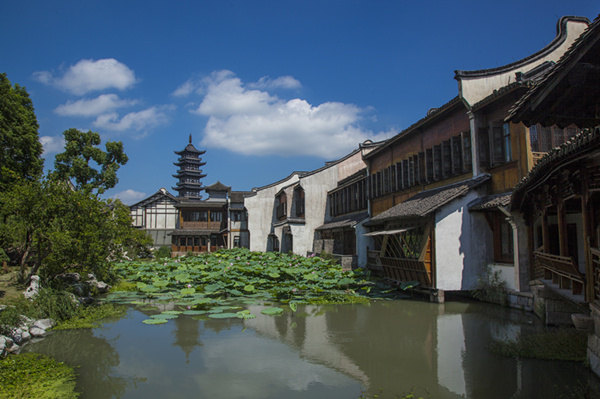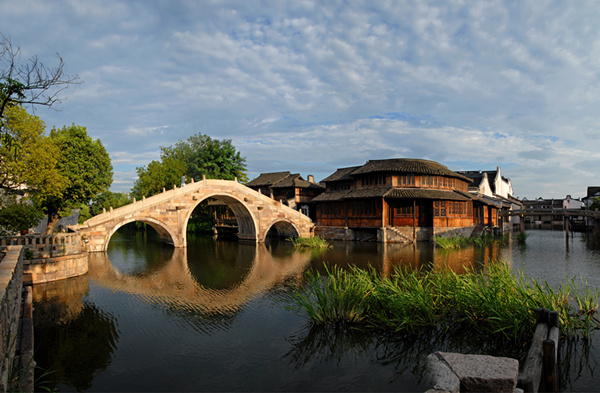A guide to Wuzhen
(wuzhenwic.org) Updated: 2015-12-08 14:56Sightseeing
Wuzhen's East and West gates are tourist areas, while the North and South are for living. To fully experience the town, an overnight stay is recommended with a sightseeing tour of East Gate at around 3 hours, and at West Gate, 5-7 hours. This year, Wuzhen has been promoting smart tourism, with the whole area covered by WIFI, and an official website and interaction via WeChat and online forums. An online sales site provides information on accommodations, tickets, service packages and local products, and you can book these services through a PC or mobile phone.
East Gate attractions: the Huiyuan Pawnshop, Fangluge Restaurant, Shadow Play, Hanlin Mansion, Xiuzhen Taoist Temple, Ancient Stage, Mao Dun Residence, Yu Liuliang Coin House, Woodcarving House, Blue Print Dye House, Gongsheng Rice Wine House, Wuzhen Folk Culture Museum, Jiangnan Antique Bed Museum, Traditional Workshops, Xiangshan Pharmacy, Boat Kongfu Shows, and Fengyuan Double Bridge.
Attractions in West Gate: There is a wide range of attractions, including: Andufang Port, Herb-dyeing Shop, Zhaoming Institute, Yudu Bridge, 3-inch Golden Lotus Museum, Old Post Office, Water Stage, Story-telling House, Hengyitang Pharmacy, Zhu Mansion, Jinyin Folk Culture Museum, Bridge in a Bridge (Tongji and Renji Bridge), White Lotus Tower Temple, Wenchang Temple, Guandi Temple, Water Theater, Shitian Square, Yida Silk Workshop, Wujin Brocade Workshop, General Wu's Temple, Xiushui Covered Street, Dingsheng Bridge, Lingshui Garden, and Mao Dun Memorial Hall.
Tower in White Lotus Temple
There is a description of the town as "one taoist temple, two towers, nine temples and thirteen monasteries". The White Lotus Tower Temple is one of these, and no matter where you take a photo at West Gate, the Tower is the best backdrop. It was built in the Northern Song Dynasty (960-1127), and is still the tallest building in town. From one side of it, you can see the Grand Canal, and from the other, the small bridges and streams of Wuzhen.
Hongyuantai Dyehouse
The Chinese blue cloth from here is known worldwide. It was established between the Song and Yuan dynasties (960-1368), originally at the South Gate, then moved to the current location during Guangxu reign of the Qing Dynasty (1644-1911). It produces both blue cloth and related products.
Bridge in a Bridge
West Gate has the Tongji Bridge running in a south-north direction, and the Renji Bridge running in an east-west direction, at a right to each other, so, no matter where you stand, you can see the other bridge clearly. From the south bank, you can see the reflection of the two bridge openings in the form of a circle that floats in and out of sight, giving Wuzhen a certain charm.






